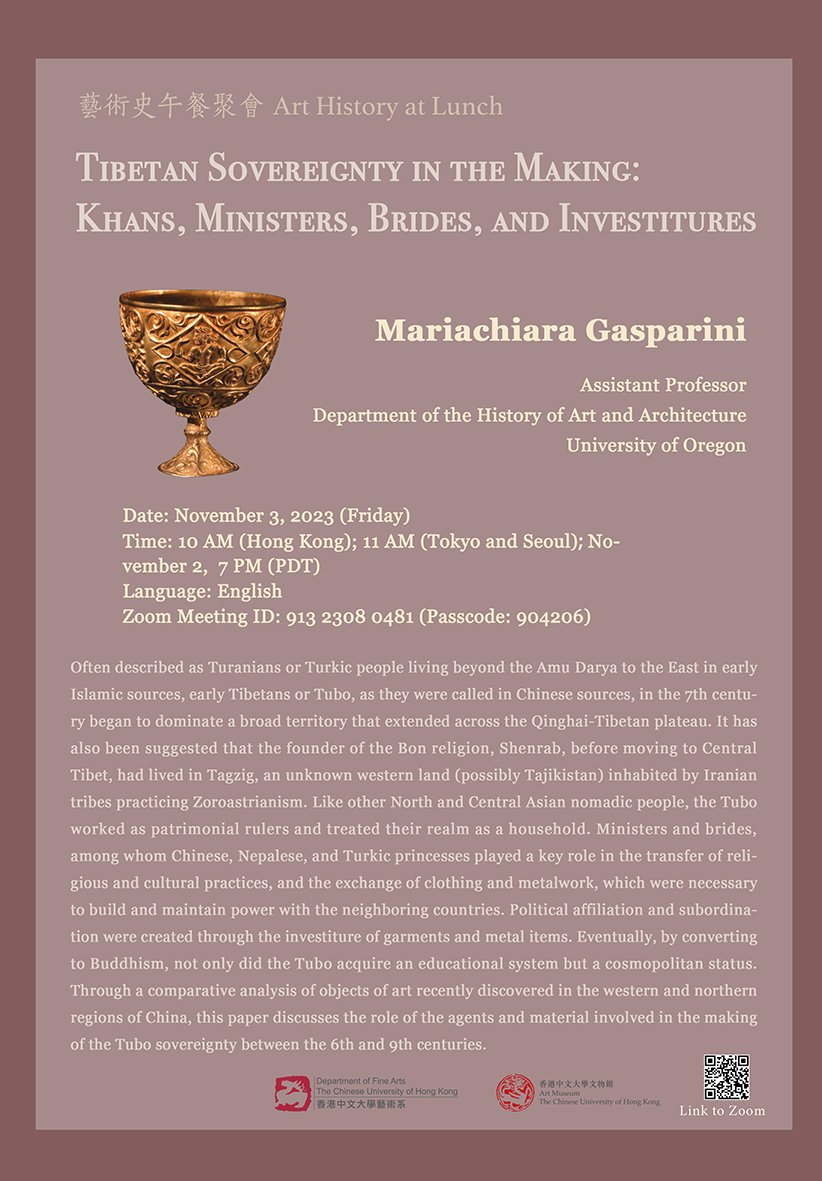Date: November 3, 2023 (Friday)
Time: 10:00 AM (Hong Kong); 11:00 AM (Tokyo and Seoul); November 2, 19:00 PM (PDT)
Language: English
Zoom Meeting ID: 913 2308 0481 (Passcode: 904206)
Often described as Turanians or Turkic people living beyond the Amu Darya to the East in early Islamic sources, early Tibetans or Tubo, as they were called in Chinese sources, in the 7th century began to dominate a broad territory that extended across the Qinghai-Tibetan plateau. It has also been suggested that the founder of the Bon religion, Shenrab, before moving to Central Tibet, had lived in Tagzig, an unknown western land (possibly Tajikistan) inhabited by Iranian tribes practicing Zoroastrianism. Like other North and Central Asian nomadic people, the Tubo worked as patrimonial rulers and treated their realm as a household. Ministers and brides, among whom Chinese, Nepalese, and Turkic princesses played a key role in the transfer of religious and cultural practices, and the exchange of clothing and metalwork, which were necessary to build and maintain power with the neighboring countries. Political affiliation and subordination were created through the investiture of garments and metal items, Eventually, by converting to Buddhism, not only did the Tubo acquire an educational system but a cosmopolitan status. Through a comparative analysis of objects of art recently discovered in the western and northern regions of China, this paper discusses the role of agents and material involved in the making of the Tubo sovereignty between the 6th and 9th centuries.
We look forward to meeting you.
Department of Fine Arts, CUHK

